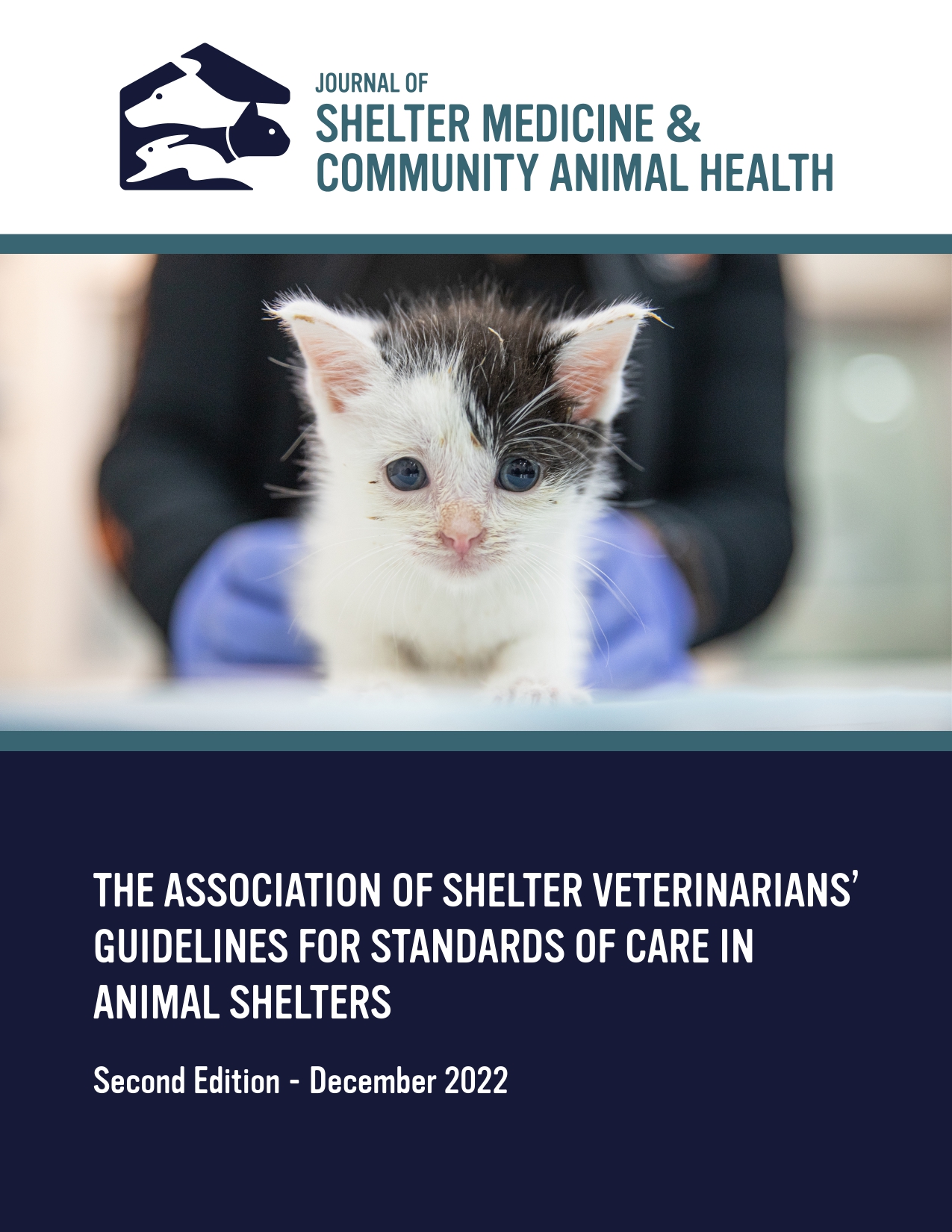Incidence of Perioperative Hypothermia in a High-Quality High-Volume Spay/Neuter Setting and Association With Environmental Temperature
DOI:
https://doi.org/10.56771/jsmcah.v2.27Keywords:
Peri-operative, hypothermia, cats, dogs, spay, neuter, anesthesia, surgeryAbstract
Introduction: Perioperative inadvertent hypothermia (PIH) can prolong anesthetic recovery times. Study goals included determining PIH incidence (rectal temperature<36°C (96.8°F)) in the high-quality high-volume spay/neuter (HQHVSN) setting and evaluating associations between environmental temperature and PIH incidence. Secondary objectives included evaluating associations between PIH incidence, anesthesia recovery times, and postoperative pain.
Methods: Prospective observational cohort study conducted at five HQHVSN shelters enrolling dogs undergoing ovariohysterectomy or castration and cats undergoing ovariohysterectomy. Blankets and electric heating pads were only used routinely in the immediate postoperative period. Regression models were used to evaluate associations between PIH incidence, environmental temperature, and pain data.
Results: One hundred and forty dogs undergoing 65 castrations and 75 ovariohysterectomies, and 161 cats were enrolled. Mean surgical times were 19.6 (8.0) min (canine ovariohysterectomies), 7.2 (3.0) min (canine castrations), and 10.6 (3.6) min (feline ovariohysterectomies). PIH incidence was 22% (95% CI = 17–27). The risk of developing PIH was associated with environmental temperature, with a 22% increase in the odds of experiencing PIH for each degree centigrade decrease in environmental temperature (OR = 1.22, 95% CI = 1.03–1.44, P = 0.02) over a recorded range of 15.6–26.1°C (60.1–79.0°F). In cats, PIH was associated with a prolongation of time to extubation by 3.8 min (95% CI 2.27–5.37, P = 0.01). On average, each degree centigrade reduction in rectal temperature at extubation was associated with an increase in pain scale of 0.51 units (95% CI = 0.06–0.97, P = 0.03) for both species. In dogs, each degree centigrade reduction in rectal temperature at extubation was associated with a reduction in mechanical threshold (indicating increased sensitivity to pain) of 1.40 N (95% CI = 0.44–2.35, P = 0.004).
Conclusion: PIH is common in a spay/neuter population despite rapid surgical times and is associated with prolonged anesthetic recovery in cats and increased postoperative pain in cats and dogs. Raising the environmental temperature in operative and recovery areas may reduce incidence.
Downloads
References
Redondo JL, Suesta P, Serra I, et al. Retrospective study of the prevalence of postanesthetic hypothermia in dogs. Vet Record. 2012;171:374. doi: 10.1136/vr.100476
Redondo JL, Suesta P, Gil L, et al. Retrospective study of the prevalence of post anesthetic hypothermia in cats. Vet Record. 2012;170:206. doi: 10.1136/vr.100184
Pottie RG, Dart CM, Perkins NR, Hodgson DR. Effect of hypothermia on recovery from general anesthesia in the dog. Aust Vet J. 2007;85(4):158–162. doi: 10.1111/j.1751-0813.2007.00128.x
Rodriguez-Diaz J, Hayes G, Boesch J et al. Decreased incidence of perioperative inadvertent hypothermia and faster anesthesia recovery with increased environmental temperature: a nonrandomized controlled study. Vet Surg. 2020;49:256–264. doi: 10.1111/vsu.13328
Schmied H, Kurz A, Sessler DI. Mild hypothermia increases blood loss and transfusion requirements during total hip arthroplasty. Lancet. 1996;347:289–292. doi: 10.1016/S0140-6736(96)90466-3
Kurz A, Sessler DI, Lenhardt R. Perioperative normothermia to reduce the incidence of surgical wound infections and shorten hospitalization. N Engl J Med. 1996;334:1209–1215. doi: 10.1056/NEJM199605093341901
Seamon MJ, Wobb J, Gaughan J, et al. The effects of intraoperative hypothermia on surgical site infection: an analysis of 524 trauma laparotomies. Ann Surg. 2012;255:789–795. doi: 10.1097/SLA.0b013e31824b7e35
Walker S, Amin R, Arca M, et al. Effects of intraoperative temperatures on postoperative infections in infants and neonates. J Pediatr Surg. 2020;55:80–85. doi: 10.1016/j.jpedsurg.2019.09.060
Alfonsi P. Postanesthetic shivering: epidemiology, pathophysiology and approaches to management. Drugs. 2001;61:2193–2205. doi: 10.2165/00003495-200161150-00004
Morehouse D, Williams L, Lloyd C, et al. Perioperative hypothermia in NICU infants. Adv Neonatal Care. 2014;14:154–164. doi: 10.1097/ANC.0000000000000045
Cronin JA, Soghier L, Ryan K, et al. A quality initiative for reducing postoperative hypothermia for neonatal intensive care unit surgical patients. Pediatr Qual Saf. 2020;5:318. doi: 10.1097/pq9.0000000000000318
Brozanski BS, Piazza AJ, Chuo J, et al. STEPP IN: working together to keep infants warm in the perioperative period. Pediatrics 2020;145:2019–2021. doi: 10.1542/peds.2019-1121
Hanna M, Htun Z, Islam S, et al. A quality improvement initiative to improve perioperative hypothermia rates in the NICU utilizing checklists. Pediatr Qual Saf. 2020;5:367. doi: 10.1097/pq9.0000000000000367
Franklin MA, Rochat MC, Payton ME, et al. Comparison of three intraoperative patient warming systems. J Am Anim Hosp Assoc. 2012;48:18–24. doi: 10.5326/JAAHA-MS-5650
Reader R, McCarthy R, Schultz K, et al. Comparison of liposomal bupivacaine and 0.5% bupivacaine hydrochloride for control of postoperative pain in dogs undergoing tibial plateau levelling osteotomy. J Am Vet Med Assoc. 2020;256:1011–1019. doi: 10.2460/javma.256.9.1011
Griffin B, Bushby PA, McCobb E, et al. The association of shelter veterinarians’ 2016 veterinary medical care guidelines for spay-neuter programs. J Am Vet Med Assoc. 2016;249:165–188. doi: 10.2460/javma.249.2.165
Henrikkson A, Kuo K, Gerken K, et al. Body mapping chart for estimation of percentage of body surface area in mesocephalic dogs. J Vet Emerg Crit Care. 2022;32:350–355. doi: 10.1111/vec.13173
Brodani JT, Luna SP, Padovani CR. Refinement and initial validation of a multidimensional composite scale for use in assessing acute postoperative pain in cats. Am J Vet Res. 2011;72:174–183. doi: 10.2460/ajvr.72.2.174
Reid J, Nolan AM, Hughes JML, et al. Development of the short-form Glasgow composite Measure Pain Scale (CMPS-SF) and derivation of an analgesic intervention score. Anim Welf. 2007;16:97–104. doi: 10.1017/S096272860003178X
Duryea E, Nelson D, Wyckoff M, et al. The impact of ambient operating room temperature on neonatal and maternal hypothermia and associated morbidities: a randomized controlled trial. Am J Obstetr Gynecol. 2016;214:505–560. doi: 10.1016/j.ajog.2016.01.190
Kim P, Taghon T, Fetzer M, Tobias J. Perioperative hypothermia in the pediatric population: a quality improvement project. Am J Med Qual. 2013;28:400–406. doi: 10.1177/1062860612473350
Rose N, Kwong G, Pang DS. A clinical audit cycle of postoperative hypothermia in dogs. J Small Anim Prac. 2016;57:447–452. doi: 10.1111/jsap.12547
Lenhardt R, Marker E, Goll V, et al. Mild intraoperative hypothermia prolongs postanesthetic recovery. Anesthesiology. 1997;87:1318–1323. doi: 10.1097/00000542-199712000-00009
Benson E, McMillan D, Ong B. et al. The effects of active warming on patient temperature and pain after total knee arthroplasty. Am J Nurs. 2012;112:26–33. doi: 10.1097/01.NAJ.0000414315.41460.bf
Doufas A. Consequences of inadvertent perioperative hypothermia. Best Prac Res Clin Anesthesiol. 2003;17:535–549. doi: 10.1016/S1521-6896(03)00052-1
Published
Issue
Section
License
Copyright (c) 2023 Jennifer Rodriguez-Diaz, Galina Hayes, Leslie Appel, Nicole Buote, Michelle Moyal

This work is licensed under a Creative Commons Attribution 4.0 International License.










